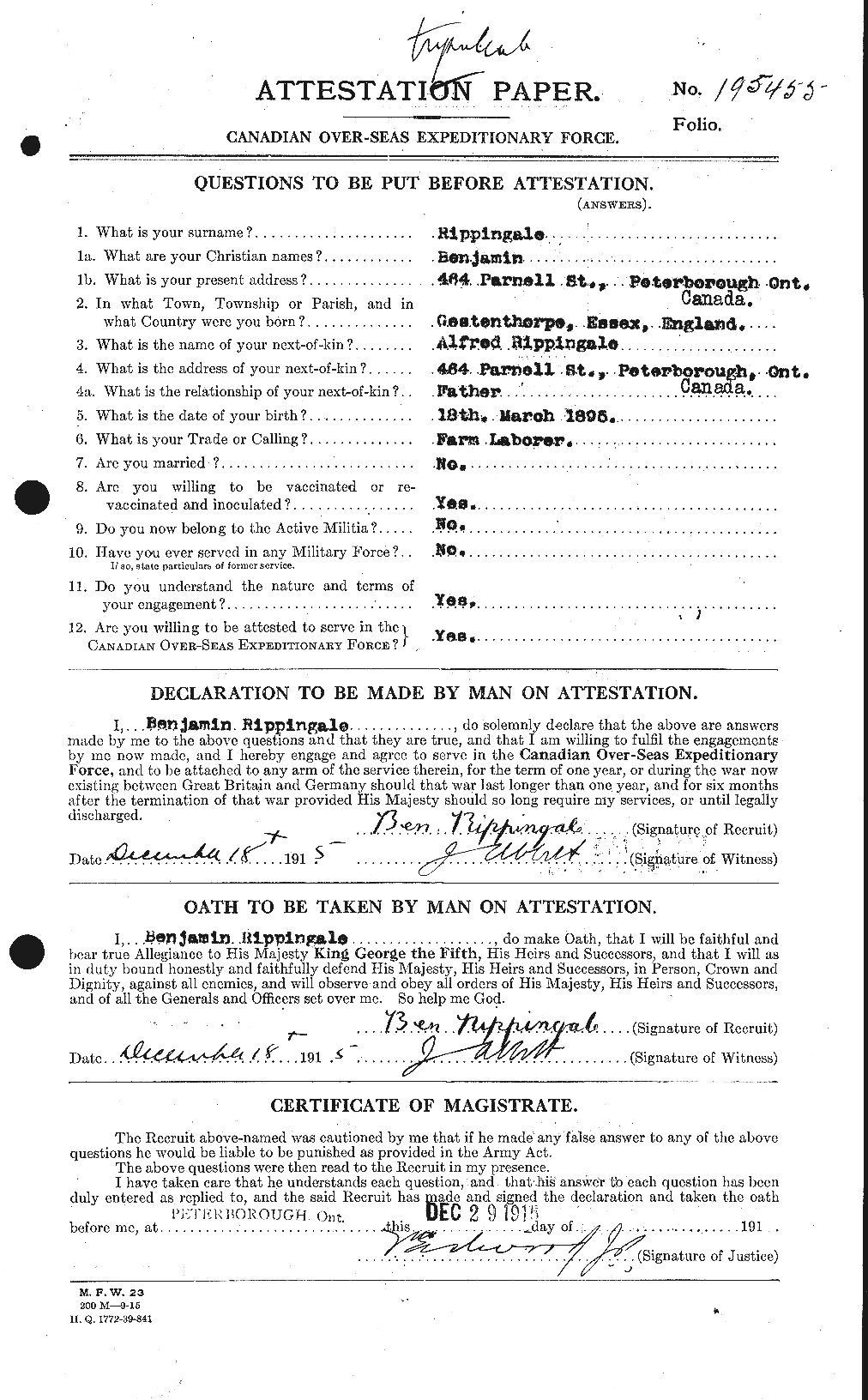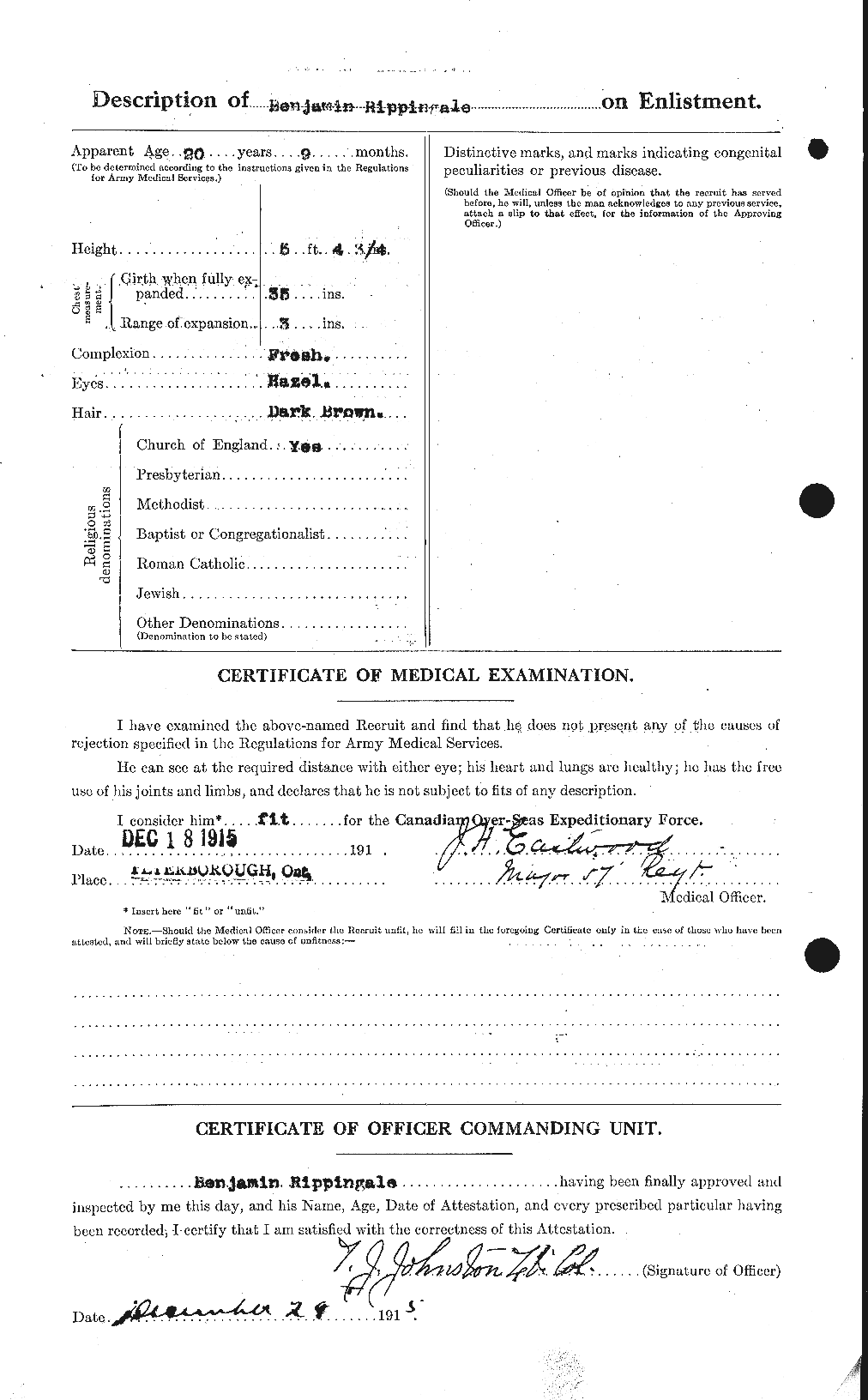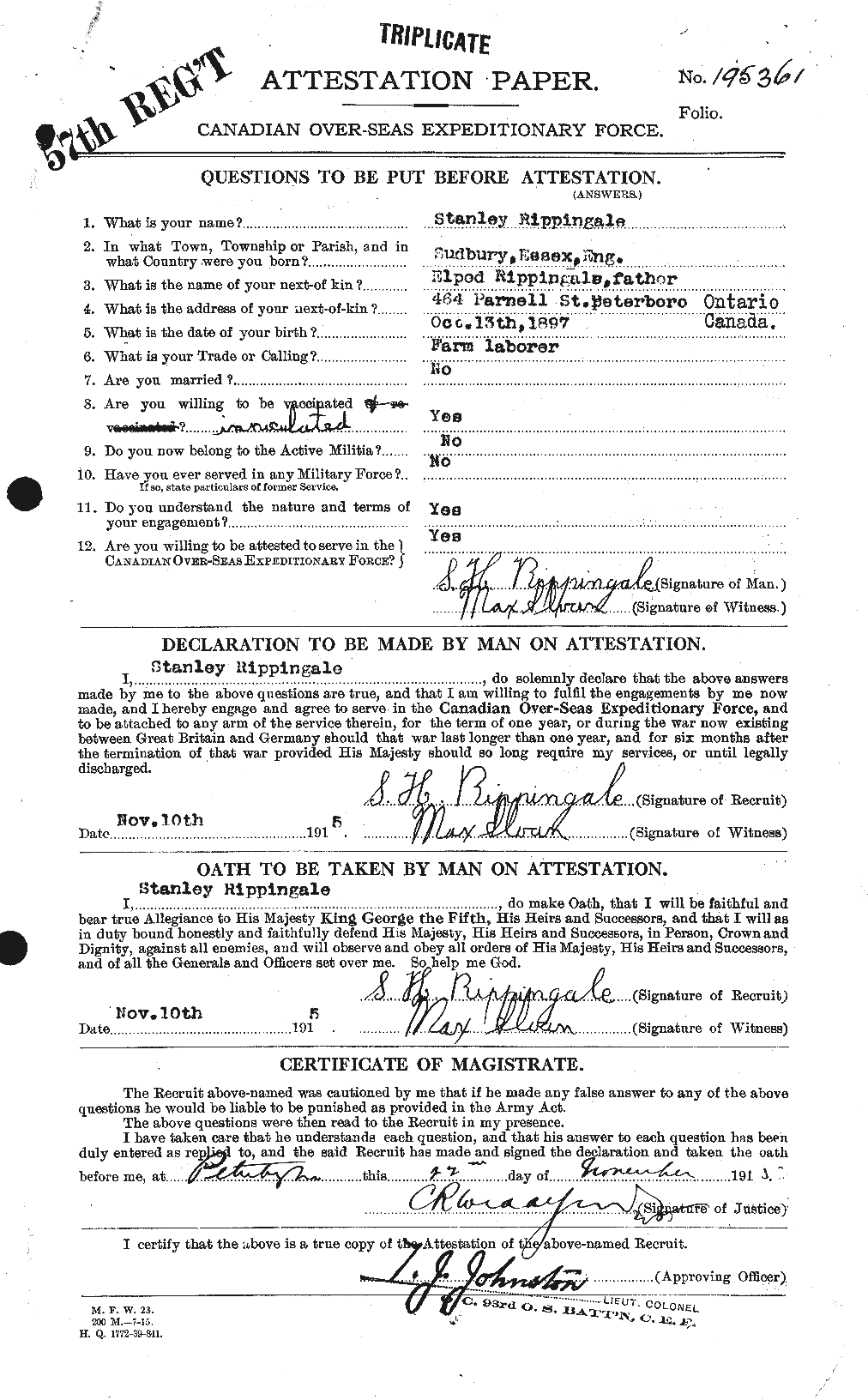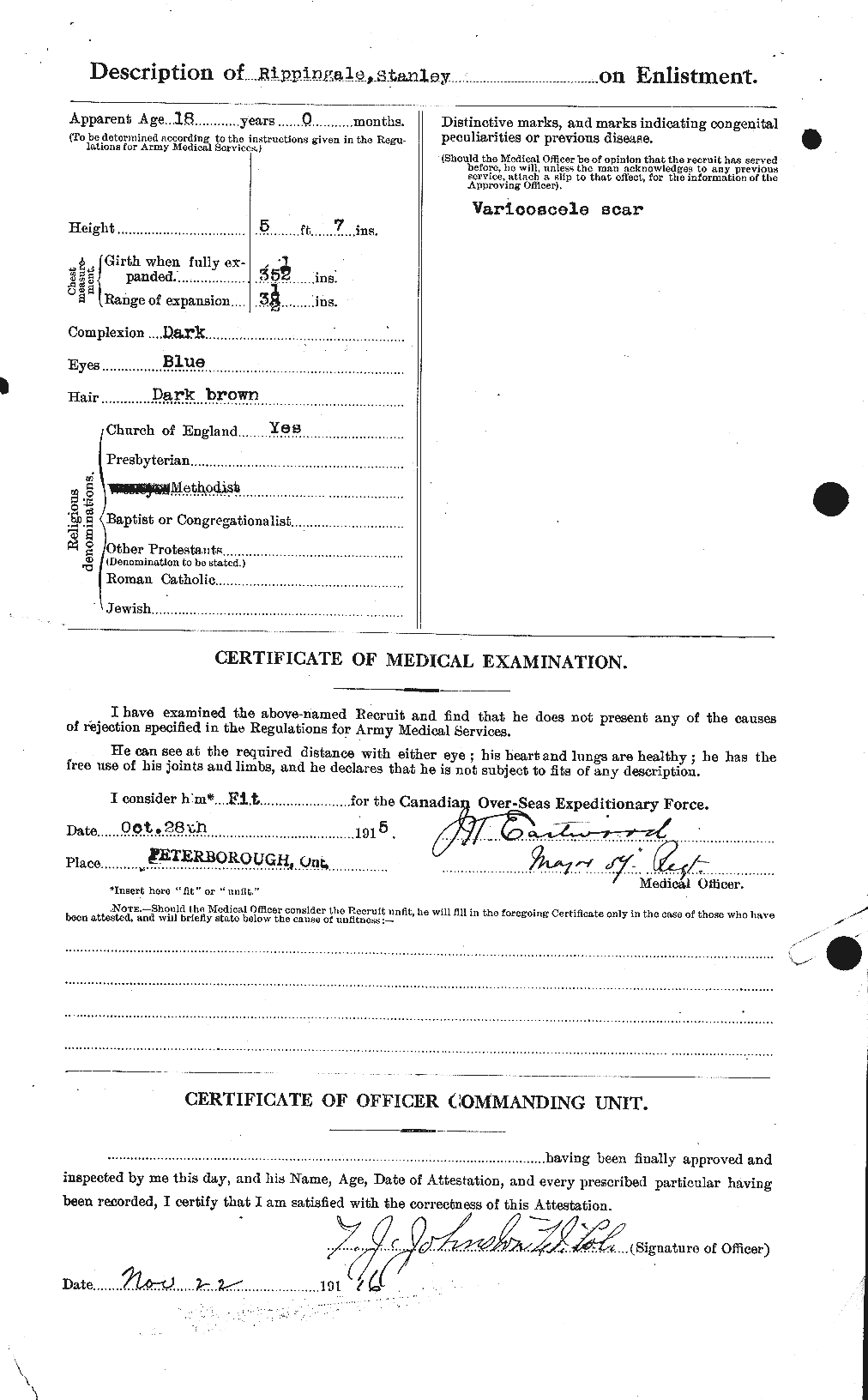
Benjamin Alfred Rippingale & Stanley Horace Rippingale
Biography
Privates Benjamin Alfred and Stanley Horace Rippingale, born March 18 1895 and October 13 1897 respectively, were just two of the many brave young men from the Peterborough area that served and died in the First World War. Originally born in Gestingthorpe (Sudbury in Stanley’s case), Essex, Britain to Agnes and Alfred Rippingale, the family immigrated to Peterborough, Ontario in the early 1900’s. Living at 464 Parnell street, the brothers worked as farm labourers until late 1915 when, despite having no militia experience, the two enlisted in the Canadian military: Stanley on November 05 (lying about his age by one year) and Benjamin later, on December 29.
The eldest, Benjamin, was described as having a ‘fresh’ complexion, with hazel eyes and dark brown hair, standing at 5’4 ¾ . Benjamin's regimental number was 195455. His brother Stanley had blue eyes,dark brown hair and a dark complexion. As well, Stanley had a Varicocele scar and his regimental number was 195361. Both were of the Church of England and had their father, Alfred, as their next of kin.
Likely going over in July of 1916, as a part of the 20th Bn (the 4th Canadian Infantry Brigade) Benjamin and Stanley would have participated in the "third phase" of the battle of the Somme (September-November 1916) as machine gunners. Specifically, on the 10 of September the 4th CIB relieved the 1st, and 19th, 20th, & 21st Battalions fought on the offensive line on the morning of September 15 in the battle of Flers–Courcelette. The Rippingale brothers would not have been present during the Canadian’s victory at Vimy Ridge, as their battalion (the 20th) was in divisional reserve at the time.
In July of 1917, the 20th battalion was training for Hill 70 (and likely Passchendaele) while still acting as a reserve. On the 16th, somewhere between Lens and Grenay, France, Benjamin and Stanley Rippingale were killed in action when, during a patrol, an enemy shell directly struck the Lewis Gun they were manning along the front line, in retaliation to a Canadian offensive. Benjamin, just 22 years old, and Stanley, only 20.The two were commemorated in an article for the Peterborough Examiner and were laid to rest side by side in the Aix-Noulette Communal Cemetery, Pas-de-Calais, France. Their names are also featured on page 316 in the First World War Book of Remembrance, which is displayed in the Memorial Chamber on July 10 & 11. They are commemorated in Little Lake Cemetery, Peterborough, and on the Otonabee Memorial.

A photo of the Rippingale brother's graves. Benjamin on the left, Stanley on the right [courtesy of veterans.gc.ca]
Photo-Story

In Memory,
1895 &1897-1917

The family home in Peterborough [Courtesy of Rippingales in Ontario Blog]

Family photo, Ben on the right, Stan on the left [Courtesy of veterns.gc.ca]

An example of a Lewis Machine Gun. [courtesy of canadiansoldiers.com]
Photographs in Order of Appearance
-
The Rippingale brothers' graves at Aix-Noulette Cemetery
-
A family photo (Ben on the right & Stan on the left
-
Their Family home in Peterborough
-
A photo of Agnes & Alfred, their parents
-
A military photo (Stan on the left)
-
An example of a Lewis Machine Gun
-
An example of a Canadian Trench
-
The Aix-Noulette Cemetery plot
-
The Otonabee memorial
-
Page 316 of the Book of Remembrance (2 pictures)
-
A second family photograph (Stan on the left, Ben on the right)
-
A field of Poppies
 |  |
|---|---|
 |  |
 |  |
 |  |
Documents
Double click to view, go to the link to view full size/the source.
Letter Examples
During the First World War, Letters were the primary method of communication between soldiers and their families back home. While by no means authentic, below are two examples of what correspondence between Benjamin Rippingale and his father Alfred may have looked like.

